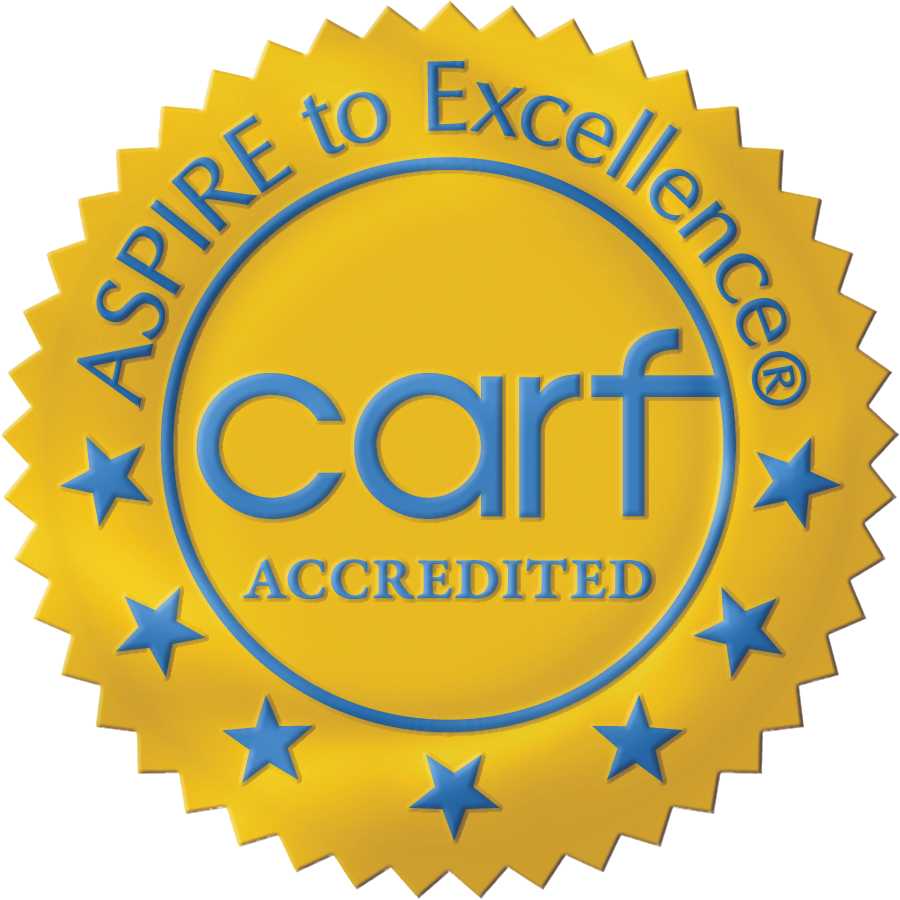Table of Contents
- What Is Opioid Withdrawal?
- What Are the Three Stages of the Opioid Withdrawal Timeline?
- What Factors Influence Your Opioid Withdrawal Timeline?
- What Is Post-Acute Withdrawal Syndrome (PAWS)?
- Why Is Professional Treatment Important During Withdrawal?
- How Can You Manage Withdrawal Safely?
- When Should You Seek Help for Opioid Withdrawal?
- What Treatment Options Are Available?
- Is There Hope for Recovery?
- Taking the First Step
The opioid withdrawal timeline varies significantly from person to person, but understanding what to expect during each stage can help individuals and families prepare for the recovery journey. Whether you’re dealing with prescription opioid medicine dependence or substance use disorder, knowing the withdrawal process is crucial for successful treatment and long-term recovery.
If you or a loved one is struggling with opioid dependence, Crestone Wellness is here to help. Our compassionate team provides medically supervised detox and comprehensive addiction treatment in a supportive, healing environment. Contact us today.
What Is Opioid Withdrawal?
Opioid withdrawal syndrome occurs when someone who has developed physical dependence on opiates suddenly reduces or stops their use. This happens because the brain and body have adapted to the presence of these substances. According to the National Institute on Drug Abuse (NIDA), withdrawal symptoms can develop even in people who take prescription opioid medicines as directed for acute pain management.
The opioid crisis has made understanding withdrawal more critical than ever. While opioid withdrawal syndrome is rarely life-threatening on its own, the symptoms can be intensely uncomfortable and often drive people to continue using opioid medicine to avoid the distress.
What Are the Three Stages of the Opioid Withdrawal Timeline?
Stage 1: Early Withdrawal (8-24 Hours)
The opioid withdrawal timeline typically begins within 8-12 hours after the last dose for short-acting opiates like heroin, oxycontin, or codeine. For longer-acting opioid medicines such as methadone or extended-release formulations, symptoms may not appear for 1-3 days.
Early withdrawal symptoms include:
- Anxiety and restlessness
- Muscle aches and pains
- Runny nose and tearing
- Sleep difficulties
- Intense cravings for opioid medicine
- Yawning and fatigue
During this stage, many people still feel they can manage symptoms through willpower or distraction. However, cravings typically intensify as time progresses, making professional withdrawal management advisable.
Stage 2: Peak Withdrawal (48-72 Hours)
The most challenging part of the opioid withdrawal timeline occurs during peak withdrawal. According to medical research published in StatPearls, symptoms typically reach their maximum intensity within 48-72 hours for most opiates.
Peak withdrawal symptoms include:
- Severe muscle and bone pain
- Nausea and vomiting
- Diarrhea and stomach cramps
- Dilated pupils and light sensitivity
- High blood pressure and rapid heart rate
- Excessive sweating and chills
- Severe anxiety and agitation
- Intense drug cravings
This stage represents the highest risk period for relapse and potential medical danger. The locus coeruleus, a brain region rich in opioid receptors, becomes hyperactive during withdrawal, contributing to these intense symptoms. Professional medical detox is strongly recommended during this phase.
Stage 3: Resolution and Recovery (7-10 Days)
For most people, acute withdrawal symptoms begin to subside after the peak period. The American Society of Addiction Medicine notes that symptoms typically clear within 7-10 days for short-acting opiates, though this timeline can extend longer for sustained-release formulations.
During the resolution phase:
- Physical symptoms gradually decrease in intensity
- Sleep patterns slowly normalize
- Appetite begins to return
- Mood symptoms may persist longer than physical symptoms
- Cravings may continue but become more manageable
What Factors Influence Your Opioid Withdrawal Timeline?
Several factors can affect how long withdrawal lasts and how severe symptoms become:
Type of Opiate: Short-acting opiates like heroin typically produce faster onset but shorter duration of withdrawal, while long-acting medications like methadone or fentanyl can have a delayed onset but prolonged symptoms. Tramadol and hydromorphone each have their own unique withdrawal patterns.
Duration of Use: Research indicates that withdrawal is more common in people using opioid medicines daily for longer than two weeks, especially more than 90 days.
Individual Health Factors: Age, overall health, mental health conditions, and genetic factors all influence withdrawal severity and duration. Dopamine and endorphins systems vary between individuals, affecting symptom intensity.
Dosage: Higher doses and more potent opiates like fentanyl or morphine generally lead to more severe withdrawal symptoms.
What Is Post-Acute Withdrawal Syndrome (PAWS)?
While acute withdrawal symptoms resolve within days to weeks, some people experience post-acute withdrawal syndrome, which can last months or even years. PAWS symptoms include:
- Persistent anxiety and depression
- Sleep disturbances
- Concentration difficulties
- Mood swings
- Ongoing cravings
Understanding that these longer-term symptoms are normal and treatable is important for maintaining recovery. Follow-up care and ongoing therapy sessions are crucial during this extended period.
Why Is Professional Treatment Important During Withdrawal?
Statistics show that approximately 2.1 million Americans struggle with opioid use disorder, according to current research. The opioid crisis has contributed to rising opioid overdose deaths, making professional care more important than ever.
Opioid withdrawal management through professional treatment has proven highly effective, with studies showing that treatments for substance use disorder can reduce illicit opiate use by up to 90%.
Medical Detox Options
Medical detox programs offer supervised detoxification with various treatment approaches:
- Methadone: A long-acting opioid medicine that reduces withdrawal symptoms and cravings by activating mu-opioid receptors
- Buprenorphine: A partial mu receptor agonist that eases withdrawal while having a “ceiling effect” for safety
- Extended-release naltrexone: An opioid antagonist that prevents euphoric effects and is administered monthly
- Lofexidine hydrochloride: The first non-opioid medication specifically approved by the FDA for opioid withdrawal syndrome
Supportive Medications
Healthcare providers may prescribe additional medications to manage specific symptoms:
- Clonidine for anxiety and blood pressure regulation
- Loperamide for diarrhea and stomach cramps
- Metoclopramide for nausea and vomiting
- Diazepam for severe anxiety (used cautiously)
- Acetaminophen or nonsteroidal anti-inflammatory medications for pain relief
- Multimodal analgesic strategies combining different pain relief medicines
How Can You Manage Withdrawal Safely?
Professional assessment and care during the opioid withdrawal timeline is crucial for several reasons:
Clinical Assessment Tools
Healthcare providers use standardized tools like the Clinical Opioid Withdrawal Scale to monitor symptom severity and adjust treatment accordingly. This assessment helps determine the most appropriate level of care.
Treatment Settings
Opioid detox can occur in various settings:
- Inpatient rehab: 24-hour medical supervision for severe cases
- Partial hospitalization program: Intensive daytime treatment with home stays
- Outpatient rehabilitation: Regular therapy sessions while maintaining daily routines
- Medical detox facilities: Specialized detoxification centers
Safety Monitoring
Medical detox provides crucial safety measures:
- Monitoring for medical danger and complications
- Access to naloxone and a naloxone kit for emergency situations
- Professional health professional oversight
- Nutrition support during recovery
- 24/7 medical supervision when needed
Tapering Protocols
Many healthcare providers recommend tapering rather than abrupt cessation. Taper schedules gradually reduce opioid medicine doses, minimizing withdrawal severity while maintaining safety.
When Should You Seek Help for Opioid Withdrawal?
Given that about 8.6 million Americans reported misusing prescription opioids in 2023, understanding when to seek professional care is vital. Consider medical detox if you:
- Experience severe withdrawal symptoms requiring assessment
- Have tried to stop using opiates unsuccessfully
- Feel overwhelmed by cravings
- Have co-occurring mental health conditions requiring diagnosis and treatment
- Lack of family or social support system during withdrawal
- Use high-risk opiates like fentanyl
Finding Treatment Resources
Several resources can help locate appropriate care:
- Online treatment locator tools
- Drug treatment programs in your area
- Recovery center facilities offering comprehensive care
- Support groups for ongoing community connection
What Treatment Options Are Available?
Comprehensive Care Programs
Effective substance abuse treatment typically includes:
- Medical detox with 24/7 medical supervision
- Counselling and individual therapy
- Family therapy to address relationship dynamics
- Support groups for peer connection and accountability
- Aftercare planning for long-term success
- Online treatment options for continued support
Ongoing Recovery Support
Long-term recovery from substance use disorder requires continued care:
- Regular follow-up care with healthcare providers
- Participation in support groups and therapy sessions
- Recovery center programs for extended support
- Online treatment platforms for accessibility
- Strong support system, including family and friends
Is There Hope for Recovery?
While the opioid withdrawal timeline can seem daunting, remember that withdrawal is a temporary process that leads to long-term benefits. With proper medical detox and professional care, millions of people have successfully navigated opioid withdrawal syndrome and achieved lasting recovery from substance use disorder.
The journey through opioid detox represents the first crucial step toward reclaiming your life from addiction. Professional drug treatment programs provide the medical expertise, emotional support, and evidence-based interventions needed to safely manage withdrawal management and build a foundation for long-term recovery.
The Importance of Professional Assessment
A thorough assessment by a health professional or qualified doctor ensures that your withdrawal management plan addresses your specific needs. This diagnosis and evaluation process considers factors like:
- Opioid risk indicator assessments
- Current opioid therapy requirements
- History of substance use
- Mental health diagnosis
- Available support system
If you or a loved one is struggling with opiate dependence, don’t let fear of withdrawal prevent you from seeking help. With comprehensive care, proper medical detox, ongoing therapy, and strong aftercare support, recovery from opioid withdrawal syndrome is not only possible—it’s achievable for anyone ready to take that first step.
Taking the First Step
At Crestone Wellness, we understand that taking the first step toward recovery can feel overwhelming. Our experienced medical team provides compassionate, evidence-based care throughout the entire withdrawal process. From medically supervised detox to comprehensive addiction treatment, we’re committed to supporting you every step of the way. Get in touch with our team to learn more about our detox program.




